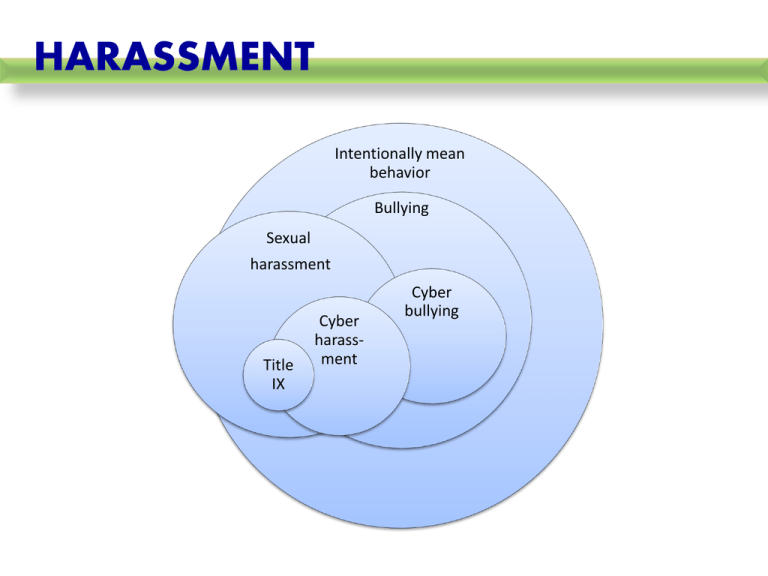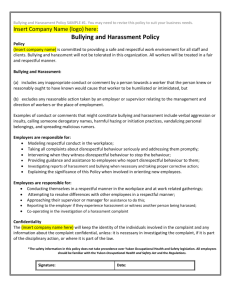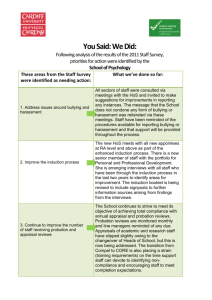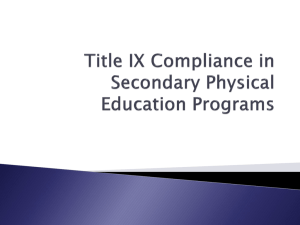
HARASSMENT
Intentionally mean
behavior
Bullying
Sexual
harassment
Title
IX
Cyber
harassment
Cyber
bullying
Figure 7. Student Reactions to Sexual Harassment, by Gender
Figure 4. Why Students Sexually Harassed Other Students
Figure 14. Student Suggestions for Reducing Sexual Harassment
at School, by Gender
WHAT IS CONGRESS DOING?
• The Safe Schools Improvement Act of 2011 was
introduced by Senator Robert Casey (PA) and
Representative Linda Sanchez (CA). The legislation was
reintroduced in 2013.
• The act would require schools to specifically prohibit bullying
and harassment, including conduct based on a student’s
actual or perceived race, color, national origin, sex, disability,
sexual orientation, gender identity or religion. It also requires
schools to implement prevention programs and report data
on bullying and harassment to the Department of Education.
LAWS & REGULATIONS
• Forty-five states have passed laws to deter bullying in public
schools and 36 states have legislation that includes electronic
harassment.
• You can find your state’s laws on bullying and harassment
through the National Association of State Boards of Education
(NASBE) State School Health Policy Database .
• The Cyberbullying Research Center creates a review of
bullying and cyberbullying state laws. Here is the April 2013
version.
LAWS & REGULATIONS
You should know that. . .
• Students who are accused of bullying are not necessarily
protected by the First Amendment.
• Schools cannot release information about students- the
Federal Education Privacy and Education Act (FERPA)
ensures the privacy of a student’s education record. This
means parents cannot obtain information about another
student through the school.
SELECTED RESOURCES
Websites:
• www.netsmartz.org
• www.isafe.org
• www.norton.com/familyresource
• www.stopbullying.gov
• www.aauw.org
QUESTIONS/COMMENTS?
Thank you.
AAUW (Your Branch Name Here)
(List website address or other contact information
for your branch)





![Bullying and Harassment Advisor role des[...]](http://s3.studylib.net/store/data/006976953_1-320eb77689e1209d082c9ec2464350ee-300x300.png)






